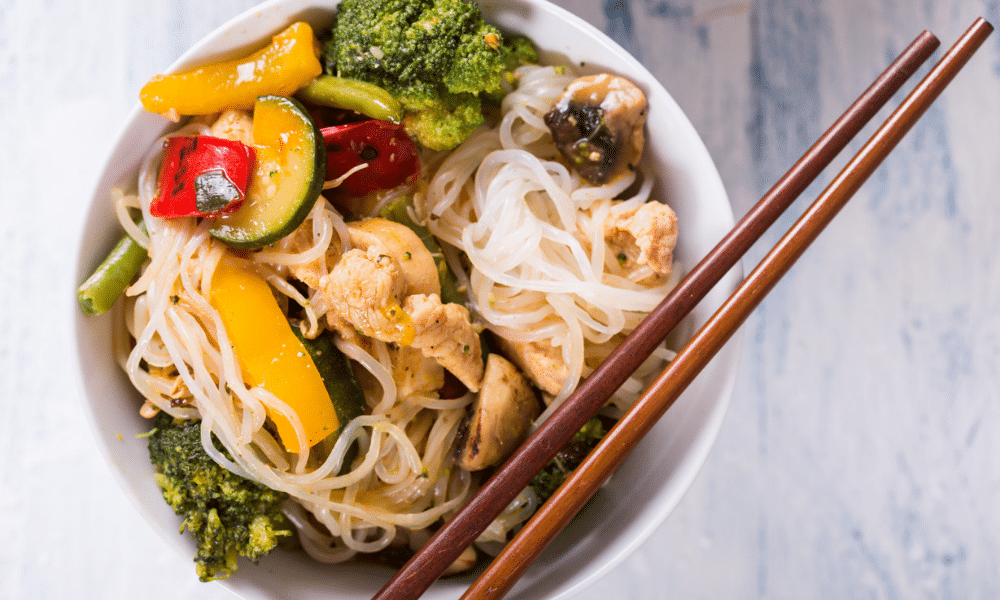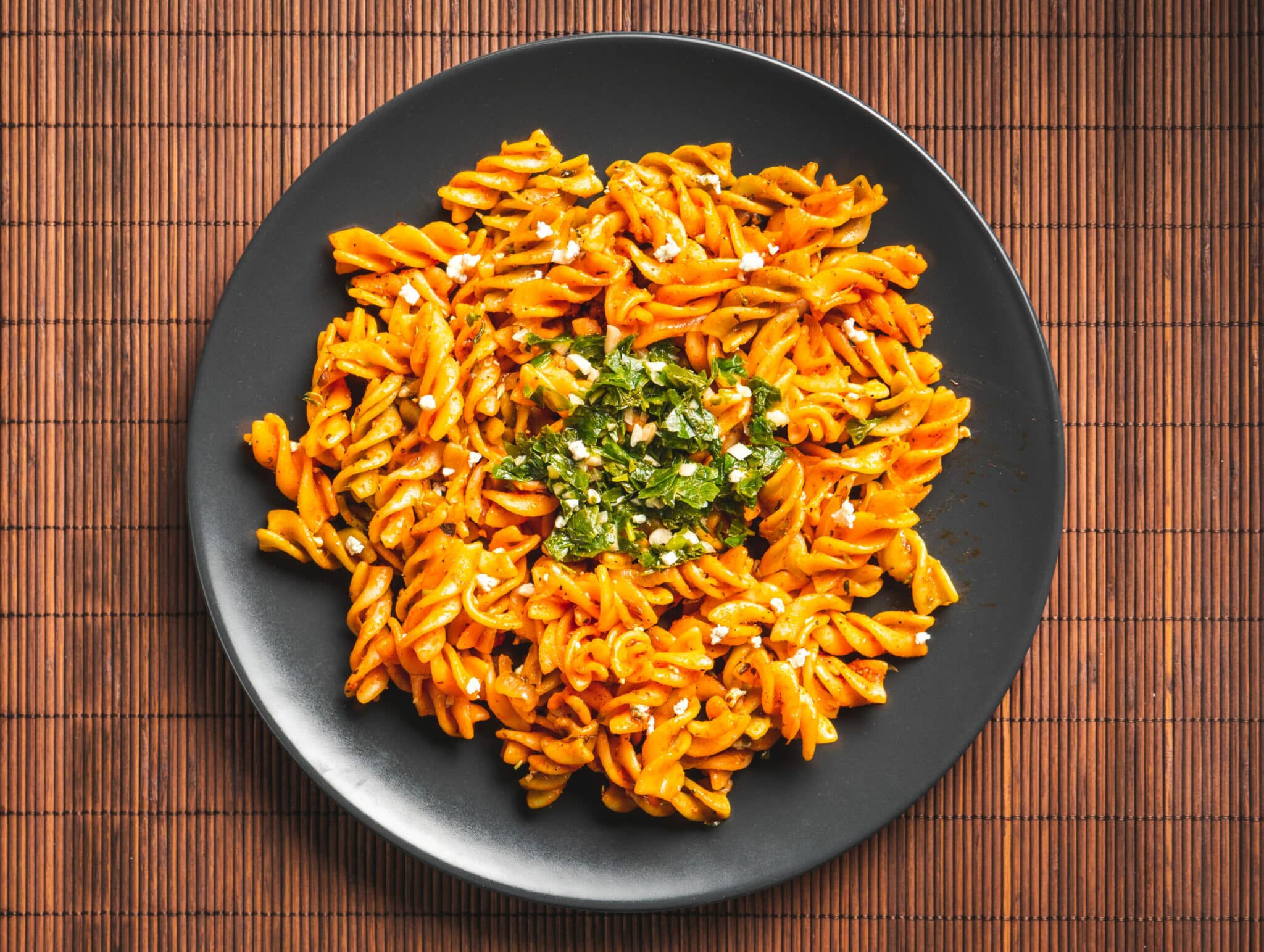Updated on November 11th, 2022
Look no further if you’re seeking a delicious gluten-free diabetic pasta substitute. Chickpea pasta, brown rice, and quinoa are all excellent choices. Fortified variants with extra protein and fiber from oats and barley, and flaxseed for natural lipids are available. Protein and fiber aid with blood sugar control. Brown rice, for example, is high in vitamins and fiber and can be used as a healthier alternative to conventional pasta. Pasta is an excellent source of protein and fiber, so try incorporating it into your pasta meals.
In many kitchens throughout the world, pasta is a vital source of carbs since it can be prepared quickly. This pantry staple comes in various attractive shapes and sizes and may be used in different recipes. Although an excellent filling staple food, white pasta is manufactured from refined flour since it is made from refined flour.
Healthy Pasta Substitutes for Diabetics
Pasta has a lot to offer: the noodles may take on any flavor and provide a satisfying savory sensation. However, pasta is high in carbohydrates and carbs, and too many carbohydrates can lead to inflammation, weight gain, and elevated blood sugar levels, especially in diabetic people.
You can still eat pasta if you have diabetes, and just keep an eye on your portion sizes. Compared to white pasta, whole wheat pasta provides more fiber, vitamins, and minerals while lowering blood sugar surges. If you’re creating diabetes-friendly meals, consider these healthy white pasta substitutes!
1. Whole Wheat Pasta
The flavor of whole wheat pasta is very similar to that of al dente pasta made with white pasta. However, a serving of whole-wheat pasta that has been cooked contains three times as much fiber as the other alternative, making it the superior choice for managing blood sugar levels.
2. Fortified Pasta
Another option for white pasta is fortified pasta. Egg whites, lentils, and other protein sources are added to the flour blend in this variety of pasta. They may also include barley and oats for added fiber and flaxseed for omega-3 lipids. In the same amount of calories as traditional pasta, some types of pasta have more protein and fiber. People with diabetes who monitor their blood sugar levels will benefit from the protein and fiber content.
Whole-grain and enriched pasta, for example, have significantly higher nutritional value than conventional white pasta. Pasta that has been fortified has fewer carbohydrates and more micronutrients and is excellent for hunger control. This pasta comes in various shapes and sizes, including spaghetti, macaroni, lasagna sheets, and more, and can be bought easily at supermarkets. Manganese, fiber, and selenium are all found in fortified pasta, and they taste almost comparable to traditional spaghetti and are thus an excellent substitute. After carefully checking the nutritional information on the labels, purchase fortified pasta.
3. Spaghetti Squash
Spaghetti squash is frequently substituted for pasta, and it has a mellow, slightly sweet flavor that goes well with tomato sauces. The squash flesh becomes stringy when cooked and resembles spaghetti, hence the name. It can be used to make a lower-carb, higher-nutrient version of some of your favorite pasta dishes.
You might also appreciate another distinction. You can eat more spaghetti squash for the same number of carbs as conventional pasta. In fact, 1 1/2 cups of cooked, shredded squash equal 1/3 cup of cooked pasta in terms of carbs.
It’s also low in calories, with 72 percent fewer calories per serving than white pasta, making it an excellent choice for people trying to keep their blood sugar under control.
4. Shirataki Noodles
Shirataki noodles are a type of Japanese noodle that has been dubbed “miracle noodles” by many. When cooked, they have a white-translucent appearance and are incredibly healthy.
Shirataki comprises glucomannan, a viscous fiber that helps with calorie control, weight loss, and hunger control. Apart from that, these miracle noodles’ also strengthen the immune system. Studies have shown Glucomannan to effectively lower blood sugar levels and modulate insulin production.
It should come as no surprise that shirataki is an excellent pasta substitute for diabetics, and it also pairs well with a variety of sauces and condiments.
5. Kelp Pasta
Seaweed or kelp pasta is a new type manufactured by rinsing and drying seaweed leaves. It’s an excellent option for seafood lovers. Seaweed has a strong ocean flavor and is commonly used in broths and stews.
Seaweed has many health benefits; it is high in vitamin C, vitamin K, calcium, folates, and iron, among other components. In studies, kelp noodles have also been shown to aid thyroid management, weight loss, and other health benefits.
These noodles, however, are poor in fiber and may cause bloating. It would be beneficial if you paired these noodles with various fiber-rich diets.
6. Veggie Spirals and Ribbons
To make spirals or ribbons of non-starchy veggies instead of pasta, use a vegetable peeler. Zucchini, yellow summer squash, carrots, eggplant, peppers, and cabbage are terrific choices.
The ribbons should be steamed until they taste and feel like ordinary pasta. 1 1/2 cup cooked veggie ribbons contains only 15 grams of carbohydrates per serving.
7. Ancient Whole Grains
Another fantastic pasta substitute is ancient whole grains. They may not look like the pasta you’re used to, but they have the same substantial flavor as regular pasta while providing more nutrients.
More common grains like quinoa have gained popularity in recent years, and Farro and sorghum are less prevalent options, at least among Americans. When combined into your favorite sauces and recipes, these are high in fiber, protein, vitamins, and minerals.
Instead of ordinary water, these ancient grains can be cooked in chicken, beef, or vegetable stock. Serve them as a side dish with fish or chicken, or top them with vegetables, a sauce, and another protein like egg or tofu. You can also make salads with grains, but keep your servings in check for the most significant blood sugar control.
8. Sprouts
Sprouts are an excellent nutrient-dense alternative to pasta. Raw sprouts as a replacement for pasta in sauces, salads, and even baked meals can do wonders for diabetic health, despite the texture and taste not matching that of white pasta.
Raw sprouts have been shown in studies to have the potential to regulate amylase, an enzyme that aids in the digestion of carbohydrates. Sprouts are also high in fiber and a variety of other nutrients.
Sprouts are also very easy to come by, inexpensive, and you can sprout grains like black-eyed peas, soy, green mung, and many more at home.
9. Vegetables(Zucchini, Carrots, Turnips, Beets, and Cucumbers)
Spiralized veggies are a terrific way to incorporate the health of vegetables into your meals and are an excellent alternative to pasta in a diabetic diet. You may also use a peeler to make noodles out of veggies by chopping them into long, thin slices. More vegetables have been shown to help people prevent chronic illnesses, lose weight, and regulate insulin production.
Combining different veggies is best; anything from turnips, parsnips, celeriac, carrots, cucumbers, and beetroot can be utilized incredibly when raw. Potatoes and yams are heavy in carbohydrates and should be avoided.
10. Pure Buckwheat Soba Noodles
For diabetics, these are a fantastic substitute for pasta. White flour can also be used to make soba. As a result, you should only buy soba made entirely of buckwheat, and it offers numerous advantages to diabetics.
Soba noodles, which originated in Japan, are high in fiber and have a low glycemic index, making them an excellent diabetes-friendly pasta substitute. They have only 50 calories per ounce or about half the calories of typical white pasta.
11. Eggplant Lasagna
If you’re looking for a healthy alternative to lasagna sheets or noodles, thinly sliced eggplant briefly boiled in saltwater can be an excellent option for diabetics. Eggplant, also known as brinjal or aubergine, is a common vegetable that can be purchased easily in stores and is inexpensive.
Eggplant, commonly known as aubergine, is an Indian vegetable, and it’s technically a berry, although it’s more usually eaten as a vegetable.
A serving of 3.5 ounces (100 grams) of eggplant has about 9 grams of carbohydrates, roughly 3.5 times less than the same amount of pasta. It’s also high in fiber, vitamins, and minerals, including vitamin K, thiamine, and manganese.
To make your eggplant lasagna, begin by slicing the eggplant lengthwise into thin slices. Then coat both sides of the slices with oil and roast until tender and brown, flipping once. When creating lasagna, simply replace the pasta sheets with roasted eggplant pieces. Skip the roasting stage and use the raw slices straight if you like a moister dish.
12. Cabbage Noodles
Cabbage is an excellent substitute for white spaghetti. Few people think of cabbage as a noodle alternative, but it’s a simple option.
It’s notably low in carbohydrates, with only 6 grams every 3.5 ounces (100 grams). Surprisingly, this amount of cabbage delivers 54 percent of the daily recommended vitamin C intake and 85 percent of the daily recommended vitamin K intake. Cabbage is also high in folate and contains various vitamins and minerals.
Raw cabbage’s texture and mild flavor are ideal for salads, and the ridges in the leaves work similarly to pasta in holding sauces and dressings. Purple cabbage can also be used as a colorful pasta substitute in diabetic-friendly recipes to enhance visual appeal. Cabbage can give up to 85 percent of the recommended daily vitamin K consumption. Furthermore, significant levels of dietary fiber can aid in blood sugar regulation by slowing digestion and modulating insulin secretion.

What are the Finest Noodles for Diabetics?
Go for Whole-Grain Pasta
According to Smithson, “Whole-grain pasta can be a wonderful option because it offers more fiber, which can help reduce blood sugar increases.” “Whole-grain pasta can be a fantastic option because it offers more fiber,” According to Bob’s Red Mill, a significant number of the typical white pasta noodles are created using semolina flour, which is produced by grinding a variety of wheat known as durum.
For Diabetics, is Egg Noodles a Good Pasta Substitute?
No. Egg noodles may have roughly 70 percent of the calories that a plate of white pasta does, even though egg noodles have a lower glycemic index and include some protein than white pasta. Although it is not quite as good a substitute as others, it is definitely better for you than white spaghetti.
Which is Healthier for Diabetics: Rice or Pasta?
Pasta. According to several studies, participants who had pasta during the research had significantly lower glucose levels in their blood compared to people who drank rice.
PP In diabetic patients, eating pasta results in a much lower peak blood sugar level than eating white rice. A study found that those with type 1 diabetes who ate pasta had a considerably lower peak spike in blood sugar after consuming the food than those who ate white rice.
Conclusion
There are a lot of alternatives to pasta that are lower in carbohydrates. Some of the most well-liked substitutions for noodles are raw vegetables and seaweed and fiber-rich alternatives to traditional noodles. Compared to regular wheat pasta, these have a significantly lower carbohydrate content and a significantly higher concentration of vitamins, minerals, and other valuable elements.
You won’t have to give up any of your favorite pasta dishes. You have diabetes because these alternatives are nutrient-dense and may make a healthy addition to your diet. We hope that these options will assist you in locating a suitable substitute for the recipe you will be following.




